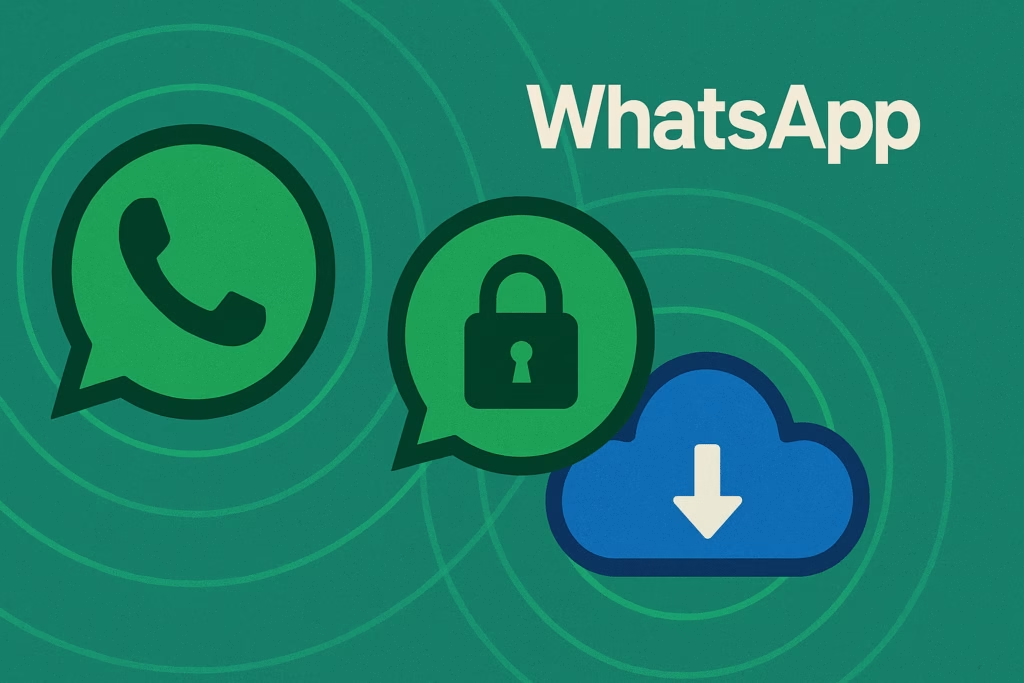
E-commerce platforms have revolutionized how Americans shop, with U.S. e-commerce sales reaching $1.034 trillion in 2022. However, this digital shopping boom has created lucrative opportunities for cybercriminals who exploit trusted brand names like Amazon and eBay to steal personal information and financial data. Understanding how these sophisticated phishing attacks work and implementing proper defenses has become essential for anyone shopping online.
The Growing Threat of E-commerce Phishing Attacks
Online shopping phishing attacks have surged dramatically in recent years. According to the Federal Trade Commission, Americans lost over $8.8 billion to fraud in 2022, with a significant portion attributed to e-commerce scams. These attacks specifically target the trust consumers place in established online retailers.
Cybercriminals exploit the massive user bases of popular platforms, knowing that millions of Americans regularly receive legitimate emails from these companies. This familiarity makes fraudulent communications more likely to bypass users’ natural skepticism.
Why E-commerce Platforms Are Prime Targets
Several factors make e-commerce platforms particularly attractive to phishing attackers:
- High user volume: Platforms like Amazon have over 300 million active users globally
- Financial data access: Users store payment methods and personal information
- Regular communication: Frequent legitimate emails create familiarity
- Trust factor: Established brands carry inherent credibility
- Mobile usage: Smaller screens make it harder to spot fraudulent indicators
Amazon Phishing: The Most Common E-commerce Scam
Amazon phishing represents the largest category of e-commerce fraud, primarily due to the platform’s massive market share. The Better Business Bureau consistently ranks Amazon impersonation among the top reported scams.
Common Amazon Phishing Tactics
Attackers employ several sophisticated methods to impersonate Amazon:
- Account suspension notifications: Fake emails claiming account problems requiring immediate action
- Prize and gift card scams: Messages about winning Amazon gift cards or prizes
- Order confirmation fraud: Fake receipts for expensive items to create urgency
- Prime membership renewals: False billing notifications for Prime subscriptions
- Security alert impersonations: Fake warnings about unauthorized access attempts
Identifying Legitimate vs. Fraudulent Amazon Communications
Authentic Amazon emails contain specific characteristics that phishing attempts often lack:
- Sender address ending in @amazon.com (not variations like @amazon-security.com)
- Personalized greeting using your actual name
- Order details that match your actual purchase history
- Links that direct to amazon.com domains when hovered over
- Professional formatting without spelling or grammar errors
eBay Phishing: Targeting Auction and Marketplace Users
eBay phishing attacks exploit the platform’s unique auction-based model and peer-to-peer selling structure. These scams often target both buyers and sellers, creating multiple attack vectors within the same platform.
Seller-Targeted eBay Phishing
Cybercriminals frequently target eBay sellers with:
- Fee dispute notifications: Fake messages about selling fee problems
- Account limitation warnings: False claims about selling policy violations
- Payment hold notifications: Fraudulent messages about funds being withheld
- Listing violation alerts: Fake warnings about item listing problems
Buyer-Focused eBay Scams
Buyers face different but equally dangerous phishing attempts:
- Second chance offers: Fake opportunities to purchase items from “unsuccessful” auctions
- Payment verification requests: False claims requiring payment confirmation
- Dispute resolution fraud: Fake eBay customer service interventions
- Account verification scams: Requests to confirm account details for “security”
Broader Online Shopping Phishing Threats
While Amazon and eBay represent the largest targets, online shopping phishing extends across numerous platforms and retailers. Attackers increasingly impersonate smaller retailers, delivery services, and payment processors to cast wider nets.
Seasonal Shopping Scams
Phishing attacks spike during major shopping periods:
- Black Friday and Cyber Monday: Fake deal notifications and urgent sale alerts
- Holiday seasons: Gift card scams and delivery notification fraud
- Back-to-school periods: Student discount and supply purchase scams
- Prime Day events: Fake Amazon deal notifications
Delivery Service Impersonation
Criminals frequently impersonate shipping companies to intercept package deliveries and steal personal information:
- UPS and FedEx delivery failure notifications
- USPS redelivery fee scams
- Package tracking verification requests
- Address confirmation phishing attempts
Advanced E-commerce Phishing Techniques
Modern cybercriminals employ increasingly sophisticated methods that can fool even security-conscious users.
Look-alike Domains and Websites
Attackers create nearly identical websites using techniques like:
- Typosquatting: Registering domains with slight misspellings (amazom.com, amzon.com)
- Subdomain spoofing: Using legitimate-looking subdomains (amazon.secure-login.com)
- Homograph attacks: Using similar-looking characters from different alphabets
- URL shortening: Hiding malicious destinations behind shortened links
Social Engineering Integration
Advanced campaigns combine multiple attack vectors:
- Initial phishing email creates urgency
- Follow-up phone calls from “customer service”
- Text message confirmations to build credibility
- Social media targeting based on stolen information
Protecting Yourself: Essential Defense Strategies
Implementing comprehensive protection requires both technical solutions and behavioral changes.
Email Security Best Practices
Follow these essential steps to identify and avoid phishing emails:
- Verify sender authenticity: Check email addresses carefully for subtle variations
- Hover before clicking: Preview link destinations without clicking
- Navigate independently: Go directly to retailer websites instead of clicking email links
- Verify urgency claims: Contact companies directly to confirm urgent messages
- Check account dashboards: Log into your actual accounts to verify notifications
Browser and Device Security
Strengthen your technical defenses with these measures:
- Enable two-factor authentication on all shopping accounts
- Use updated browsers with phishing protection enabled
- Install reputable antivirus software with real-time protection
- Keep operating systems and security software current
- Use strong, unique passwords for each shopping account
Financial Protection Strategies
Minimize financial exposure through smart payment practices:
- Use credit cards over debit cards: Better fraud protection and dispute resolution
- Monitor statements regularly: Check for unauthorized charges weekly
- Set up account alerts: Receive notifications for all account activity
- Use virtual payment methods: Services like PayPal add protection layers
- Avoid public Wi-Fi shopping: Use secure connections for financial transactions
What to Do If You’re Targeted
Quick response can minimize damage if you encounter or fall victim to phishing attacks.
Immediate Response Steps
Take these actions immediately if you suspect phishing:
- Do not click any links or download attachments
- Report the phishing attempt to the legitimate company
- Forward suspicious emails to the Anti-Phishing Working Group at reportphishing@apwg.org
- Delete the fraudulent message from your inbox
- Scan your device for malware if you clicked suspicious links
If You’ve Been Compromised
Act quickly if you’ve provided information to phishers:
- Change passwords immediately: Update all affected account credentials
- Contact financial institutions: Alert banks and credit card companies
- Monitor credit reports: Watch for unauthorized account openings
- File appropriate reports: Contact the FTC and local law enforcement
- Document everything: Keep records of fraudulent communications and responses
The Role of Professional Phishing Protection
While individual vigilance is crucial, comprehensive protection often requires professional-grade security solutions. Advanced phishing protection services can identify sophisticated threats that bypass standard email filters and browser warnings.
Solutions like PhishDef provide real-time protection against evolving e-commerce phishing threats, using advanced threat intelligence and machine learning to identify new attack patterns before they reach your inbox. This proactive approach is particularly valuable for frequent online shoppers who face higher exposure to phishing attempts.
Key Takeaways for Safe Online Shopping
Protecting yourself from e-commerce phishing requires constant vigilance and the right tools:
- Always verify unexpected communications by contacting companies directly
- Use strong authentication and unique passwords for all shopping accounts
- Stay informed about current phishing trends and attack methods
- Implement comprehensive security measures including professional phishing protection
- Act quickly if you suspect you’ve been targeted or compromised
E-commerce phishing attacks will continue evolving as online shopping grows. By understanding these threats and implementing robust defenses, you can shop online with confidence while protecting your personal and financial information from cybercriminals.
Ready to strengthen your defenses against e-commerce phishing attacks? PhishDef offers advanced protection specifically designed to identify and block sophisticated phishing attempts targeting online shoppers. Discover how our comprehensive security solution can safeguard your digital shopping experience and protect your valuable personal information from evolving cyber threats.



I rarely open up like this, but if it gives someone hope, it’s worth it. I once lost a large amount to a crypto mess and thought it was gone forever. After a long, painful road, I found real help someone who knew what to do and actually got it back for me. If you’re in the same dark place, just know you’re not alone. There’s still a way. You can reach out by email ( at Recover at mail2usa com). Don’t give up.